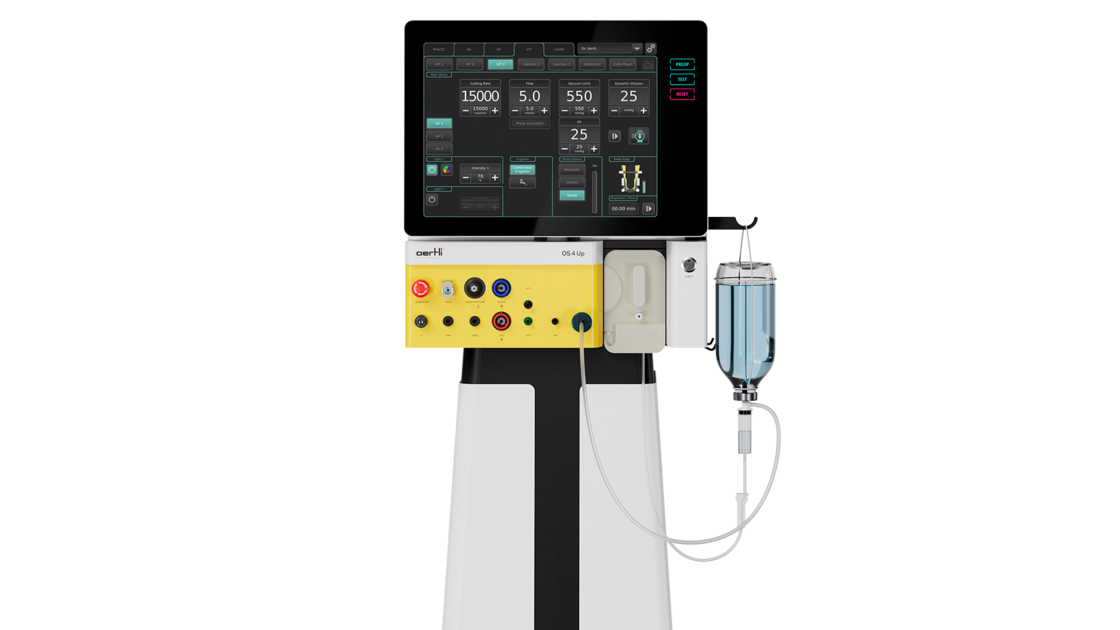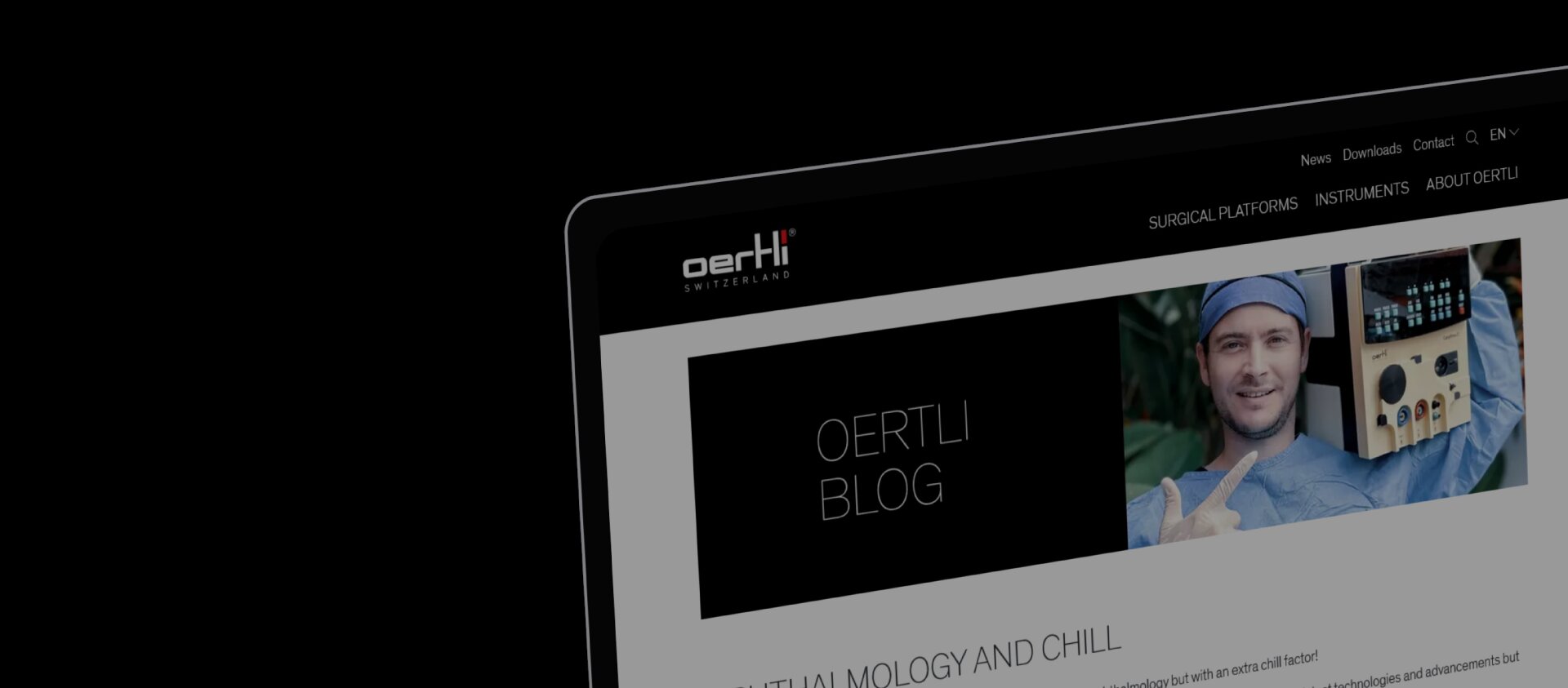
How missing Surgery Training may result in Little Confidence in Technology
Published: 08/10/2025, Reading time: 4 minutes
Cataract surgery training faces significant challenges in many countries: limited hands-on experience, low surgical confidence, and a lack of real-world training environments. At the same time, the importance of reliable, high-quality surgical systems continues to grow.
Trusting your surgical machine can be a defining factor in building confidence and consistency — that’s exactly what the OS 4 Up — Enjoy Surgery stands for. The new platform is designed so that surgeons and OR personnel can enjoy surgery.
The Current State of Surgical Training in Europe
-
In a recent analysis of European Board of Ophthalmology (EBO) data, 61% of trainees in Germany reported never performing a single step of cataract surgery on a patient during residency [1].
-
Only 22.8% had completed 10 or more wet labs using animal eyes [1].
-
Additional studies show that increased training volume correlates strongly with greater surgical confidence [1].
-
Similar international findings indicate that 25.6% of ophthalmology residents receive no live cataract surgery training during their programs [2].
-
Learning curve research confirms that complication rates are significantly higher in the first 100–150 cases and improve markedly with experience [3].
These statistics highlight a critical gap: much of the training remains theoretical or simulated — with little real surgical exposure during residency and thus missing trust in the technology.
Why Structured Phaco Training and Trust Matter
Structured phaco training is more than a curriculum — it’s a systematic process for reducing risk, building confidence, and avoiding complications. A strong framework might include:
-
Solid theoretical knowledge before first hands-on attempts
-
Wet labs and simulations (animal, synthetic, or VR-based)
-
Dry lab training with microscopes and foot pedal use
-
Extensive observation of real surgeries
-
Step-by-step surgical participation, beginning with tasks like I/A or lens implantation
-
Mentoring and intraoperative feedback, with progressive responsibility
An unstable or unreliable surgical system can interfere with this process — increasing frustration and potentially delaying surgical readiness. This underscores the importance of using a platform that surgeons can fully trust.
Surgical platforms for vitreoretinal and cataract surgery like the OS 4 Up are designed with that trust in mind.
Technology Spotlight: How Modern Surgical Platforms Can Support Learning
To conclude, it’s worth considering how modern surgical systems may support these training goals. Solutions like the OS 4 Up platform offer features that can assist both beginners and advanced users through improved control, consistency, and visualization — especially when embedded into structured surgical education.
| Feature | Description |
| Dynamic Infusion | Helps stabilize intraocular pressure by dynamically compensating for aspiration-induced fluctuations — particularly beneficial in training phases where predictable conditions are essential. |
| PACS – Phaco Assisted Cataract Surgery | Enables consistent emulsification regardless of lens condition by actively regulating flow and energy delivery. |
| Power LED Plus | Offers precise control over illumination and color spectrum to match surgical needs, with foot pedal-based switching for seamless intraoperative adjustments. |
| easyVit | Allows complete posterior vitrectomy within one program, streamlining workflows and simplifying setup — the cutter can be used either for vitreous removal or cortical aspiration. |
| Laser Aiming Beam | Dimmable and compatible with 3D or standard microscopes, integrated into pedal control for intuitive handling. |

Conclusion: Training Needs Structure — and the Right Support
Cataract surgery training continues to vary widely across countries. A structured, well-guided training approach — built on theory, simulation, observation, and gradual hands-on experience — is critical for patient safety and long-term surgical development.
Modern surgical platforms like the OS 4 Up may serve as valuable tools when integrated into a thoughtful training framework. Yet no machine can replace mentorship, structured curricula, or clinical experience. Technology should be seen as a supportive building block on the broader journey to surgical excellence.
Phaco History
Check out our blog about the history in phacoemulsification - and more.
Robotics and AI in ophthalmology
Discover the latest innovations and get all the information you need on this topic.
Glaucoma and HFDS
HFDS shows its love for the eyes by offering a minimally invasive and gentle approach to glaucoma treatment. Check it out.
Oertli data on file
This blog post now accurately references the provided sources in the correct order, ensuring clarity and proper attribution of information. If you have further adjustments or additions, feel free to ask!
This blog was written with the support of artificial intelligence (Chat-GPT).
-
Achatz, R., et al. (2024). Cataract surgical training in Europe: Data from EBO candidates 2018–2022. PubMed. https://pubmed.ncbi.nlm.nih.gov/40020715/
-
Liu, T., & Soiberman, U. (2024). Comment on: Cataract surgical training in Europe. Journal of Cataract & Refractive Surgery, 50(8). https://journals.lww.com/jcrs/fulltext/2024/08000/comment_on__cataract_surgical_training_in_europe_.22.aspx
-
Staropoli, P. C., Gregori, N. Z., Junk, A. K., Galor, A., Goldhardt, R., Goldhagen, B. E., & Sridhar, J. (2015). Surgical outcomes and learning curve of phacoemulsification performed by ophthalmology residents. Journal of Cataract & Refractive Surgery, 41(7), 1289–1294. https://www.sciencedirect.com/science/article/abs/pii/S0002939422004950
-
Medicanix. (2023). Why Regular Maintenance of Ophthalmic Equipment is Crucial to Patient Safety. https://medicanix.com/news-and-blog/category/why-regular-maintenance-ophthalmology-equipment-crucial-patient-safety
